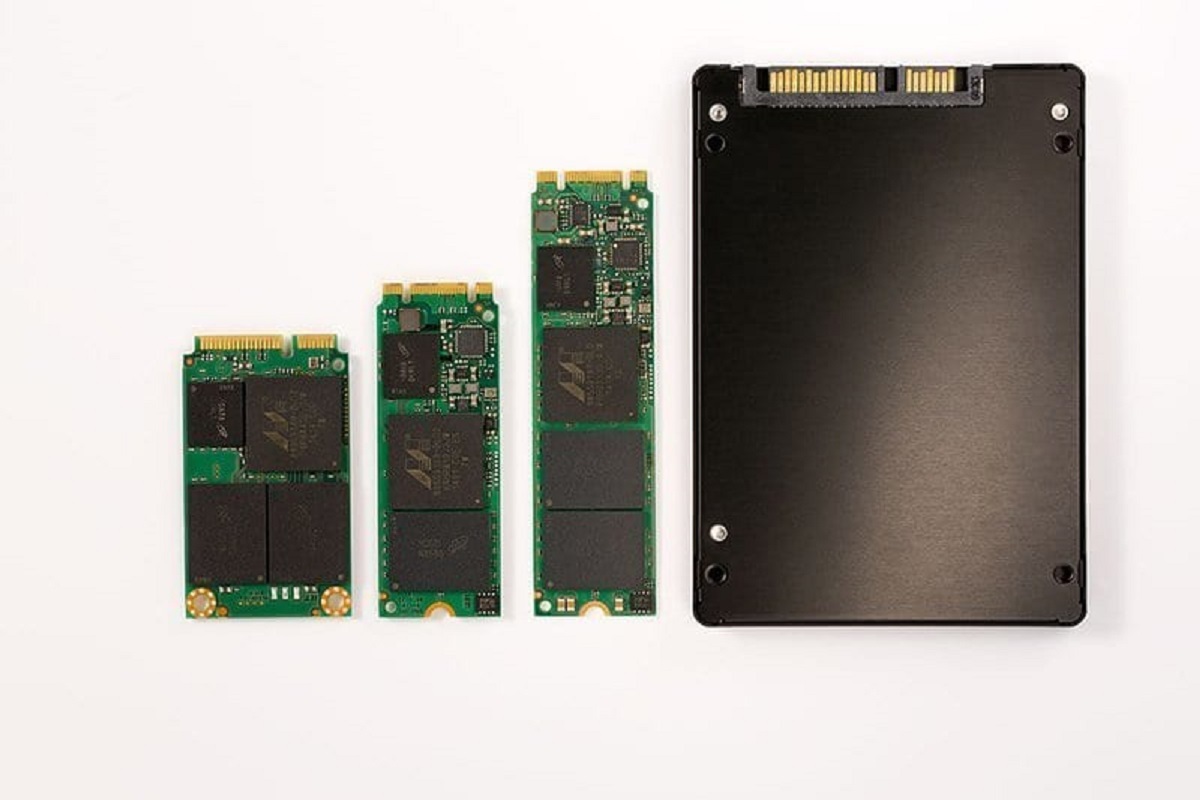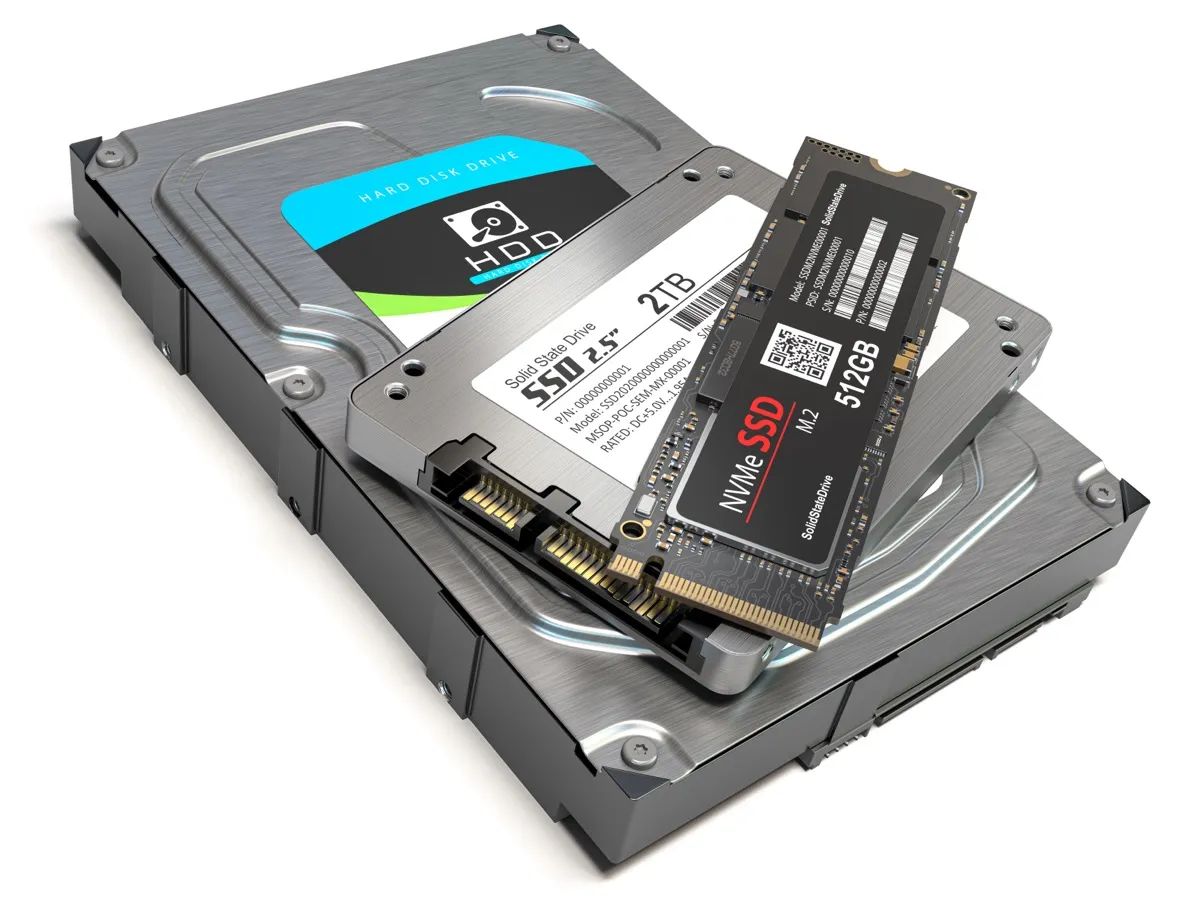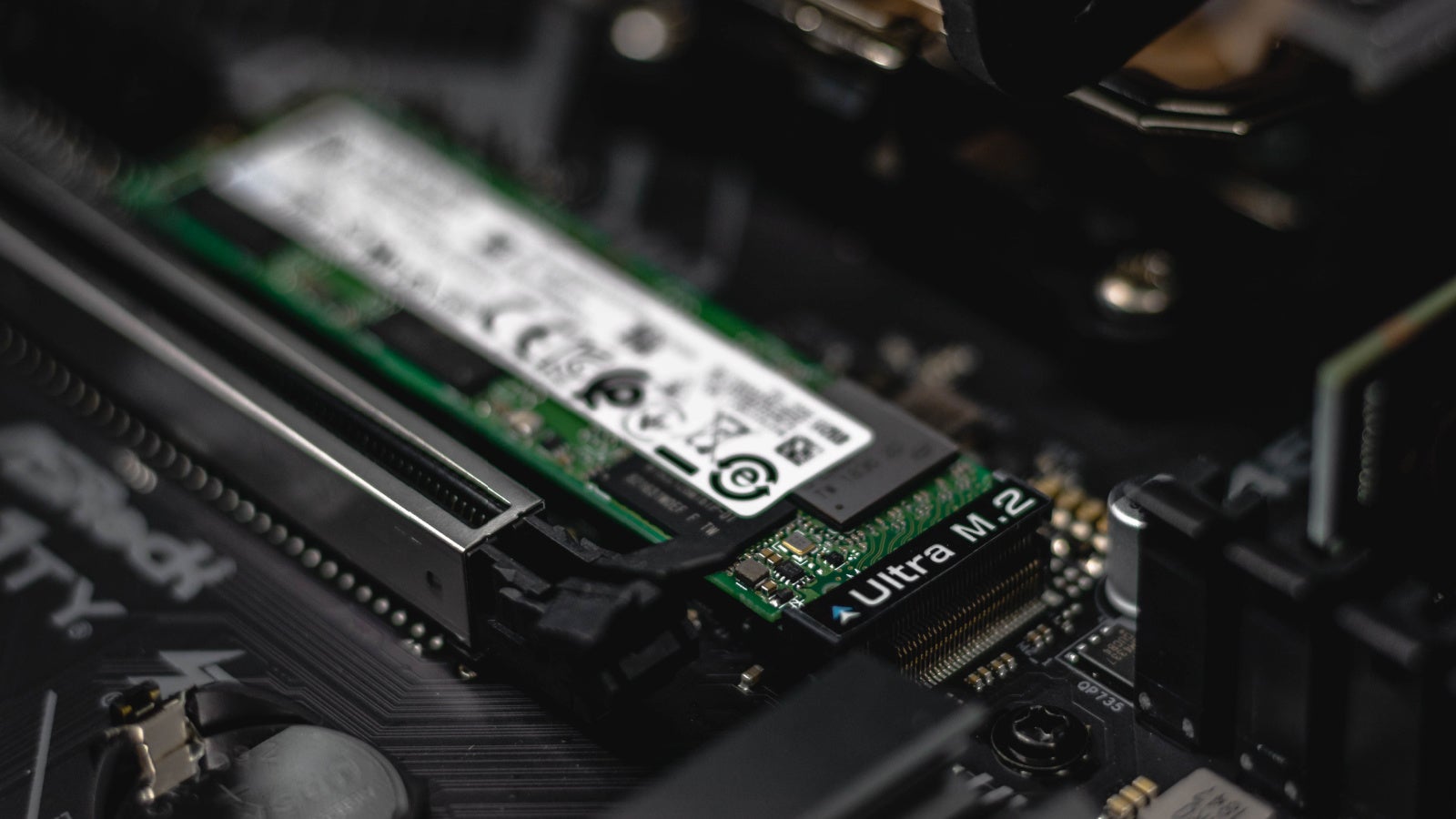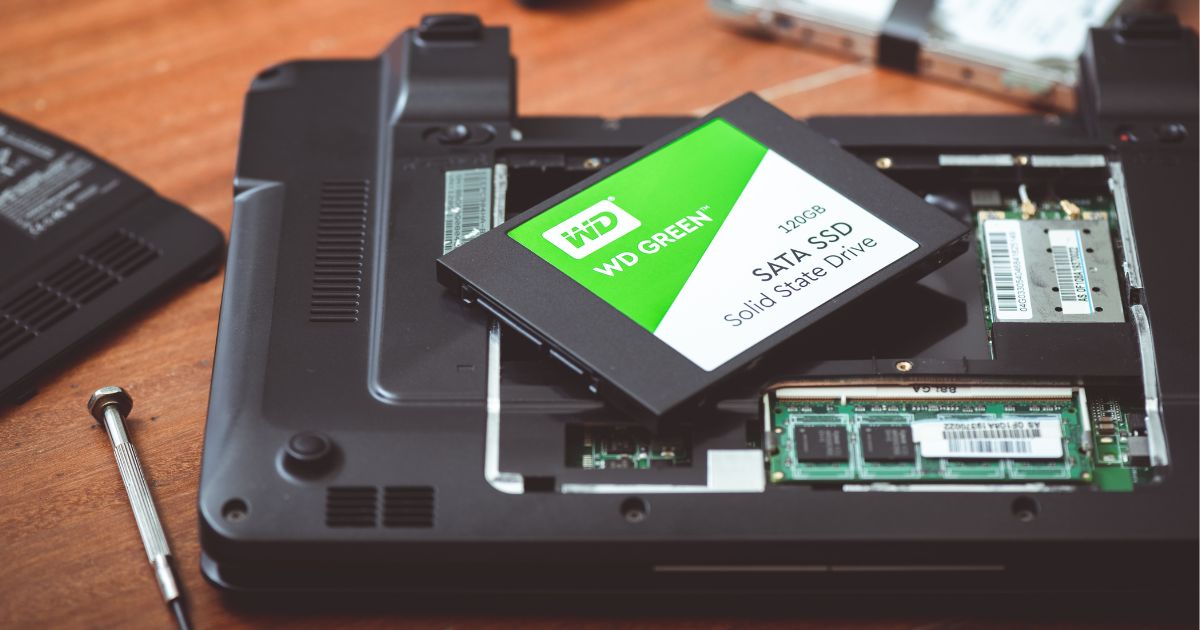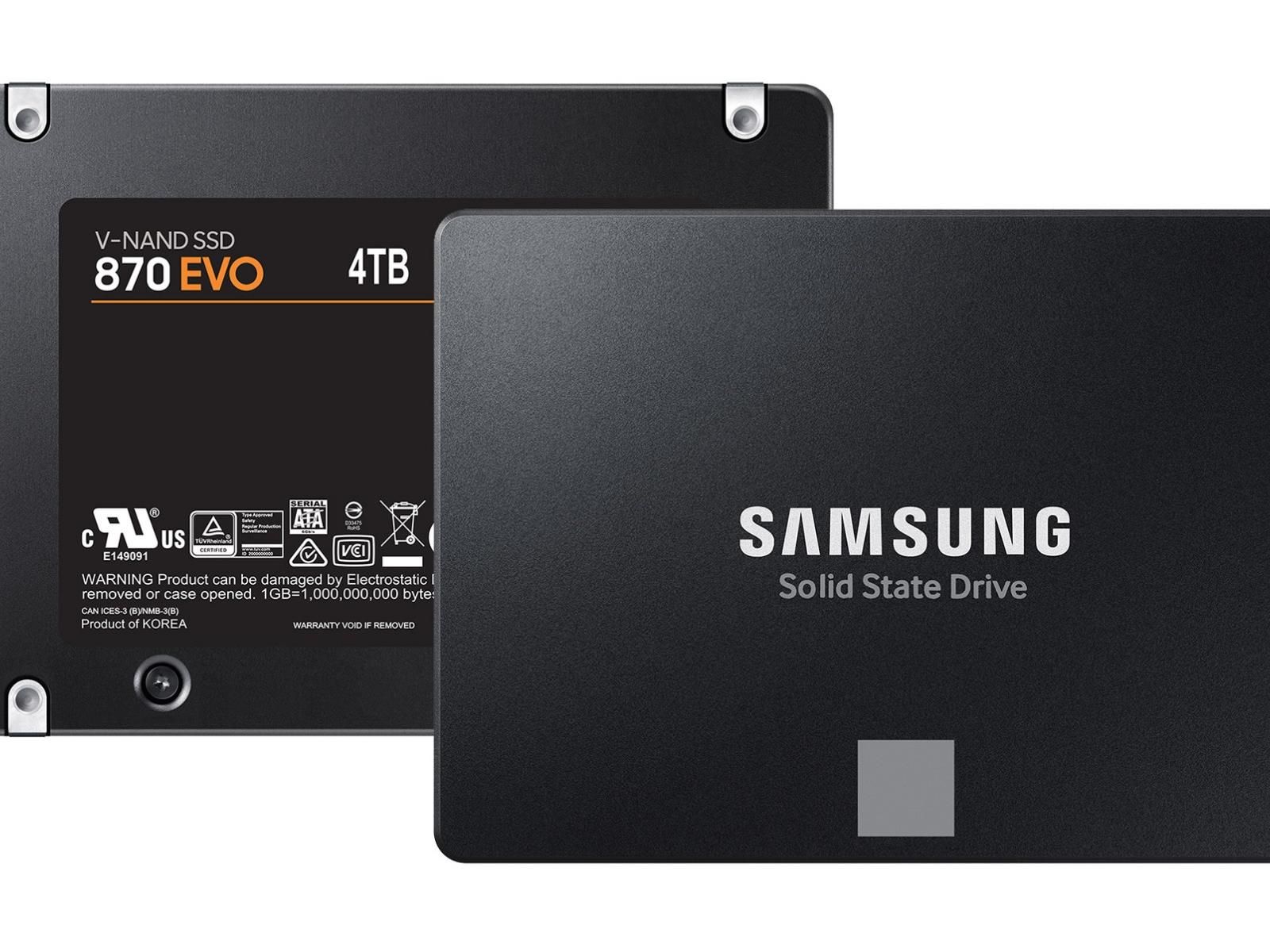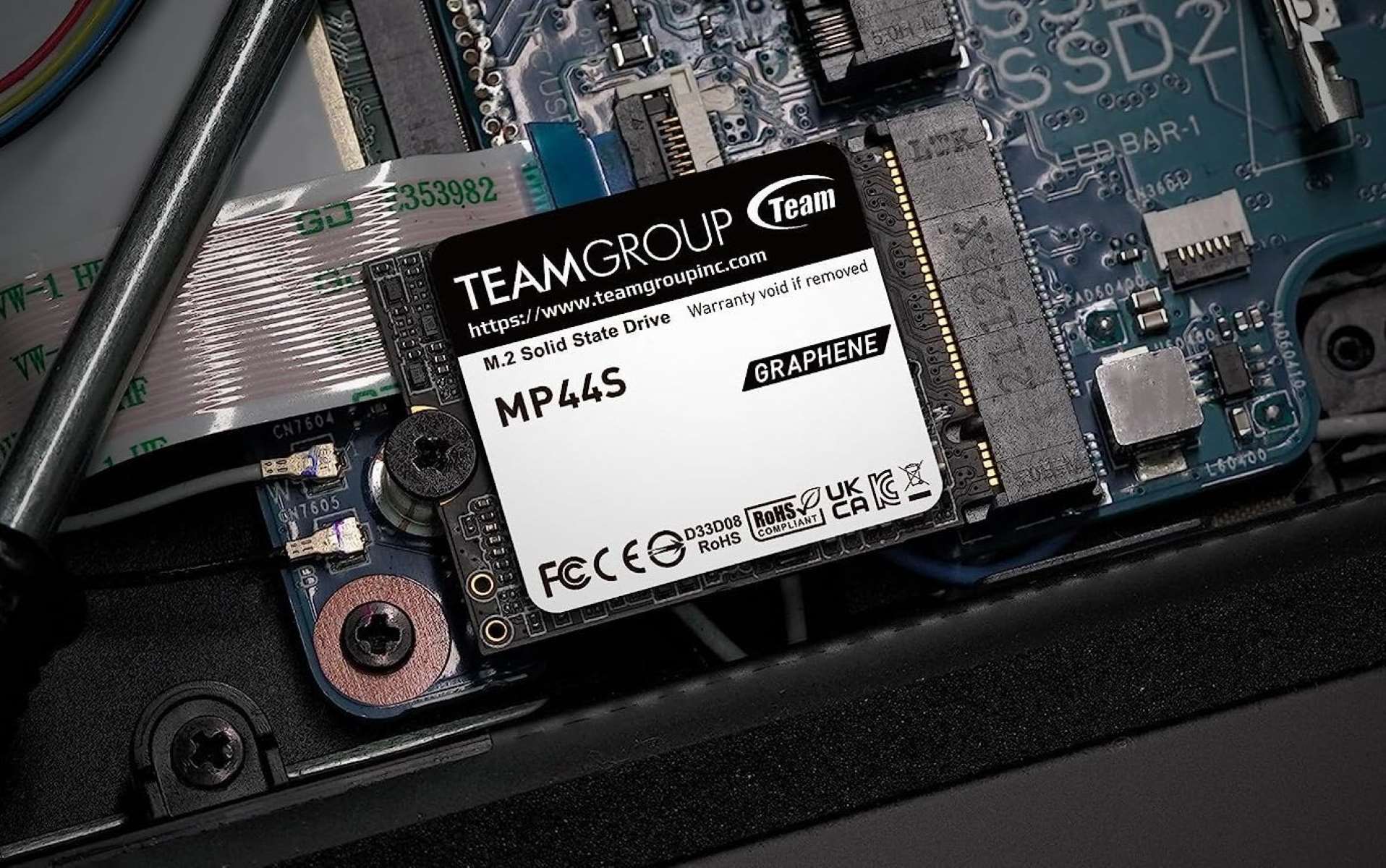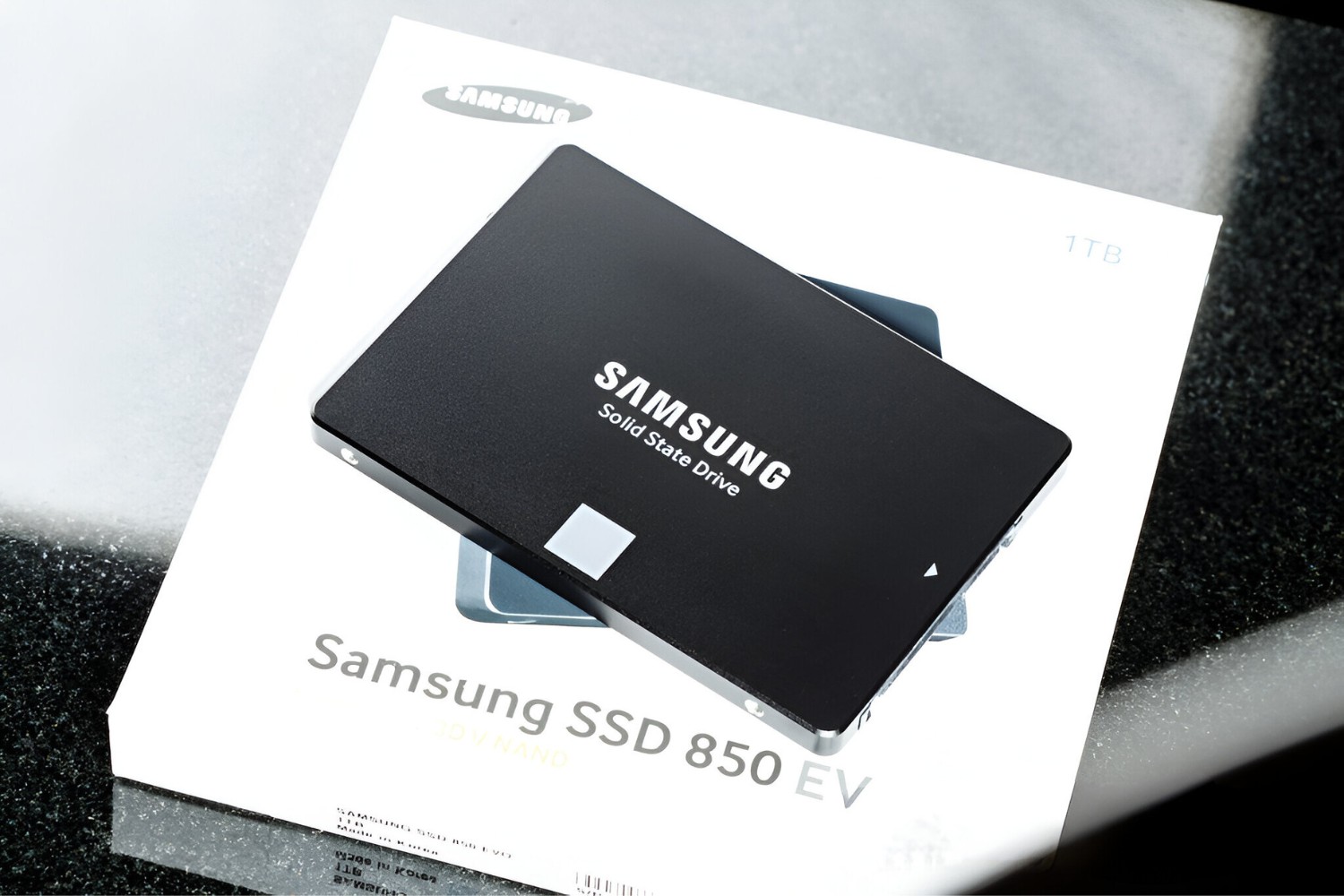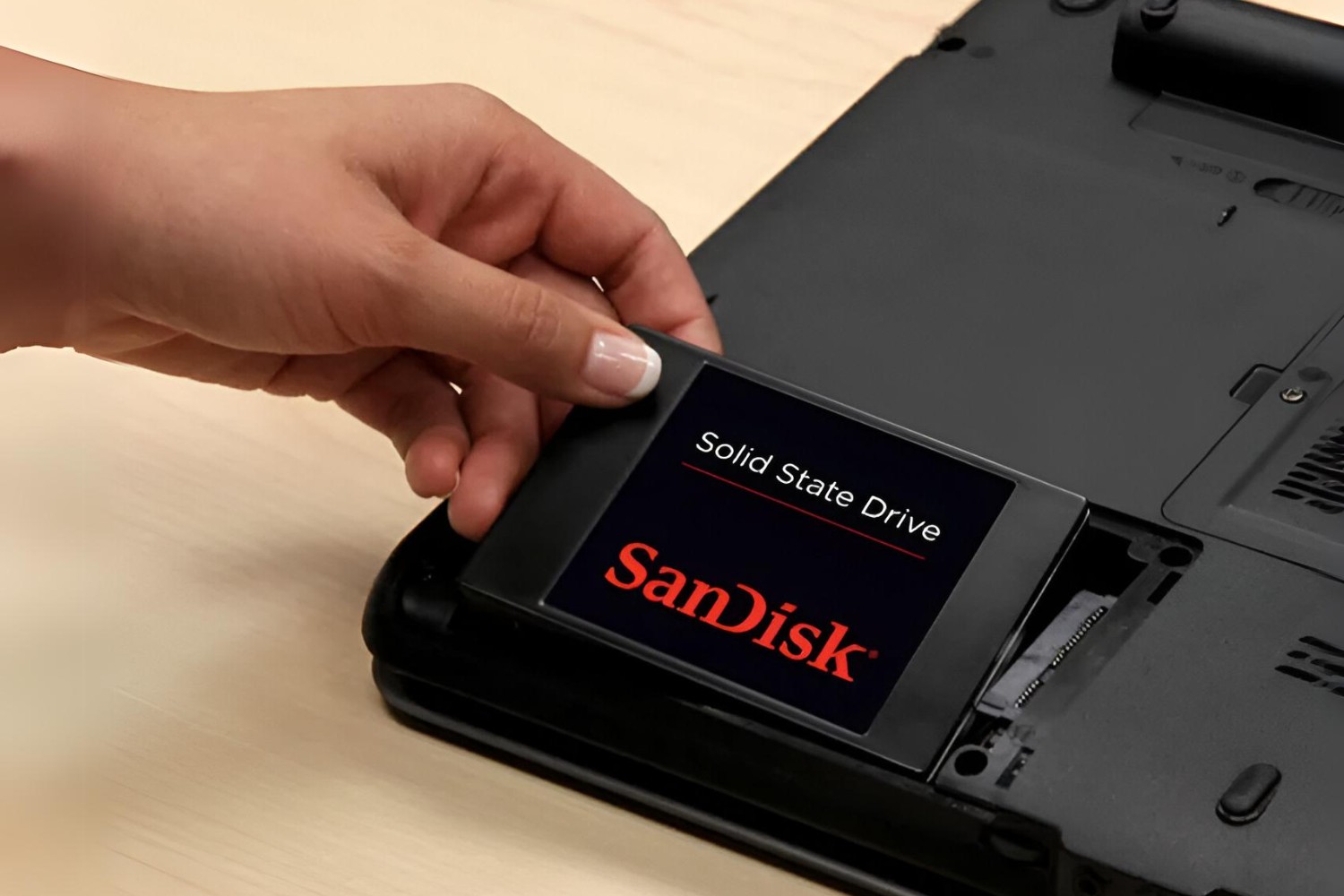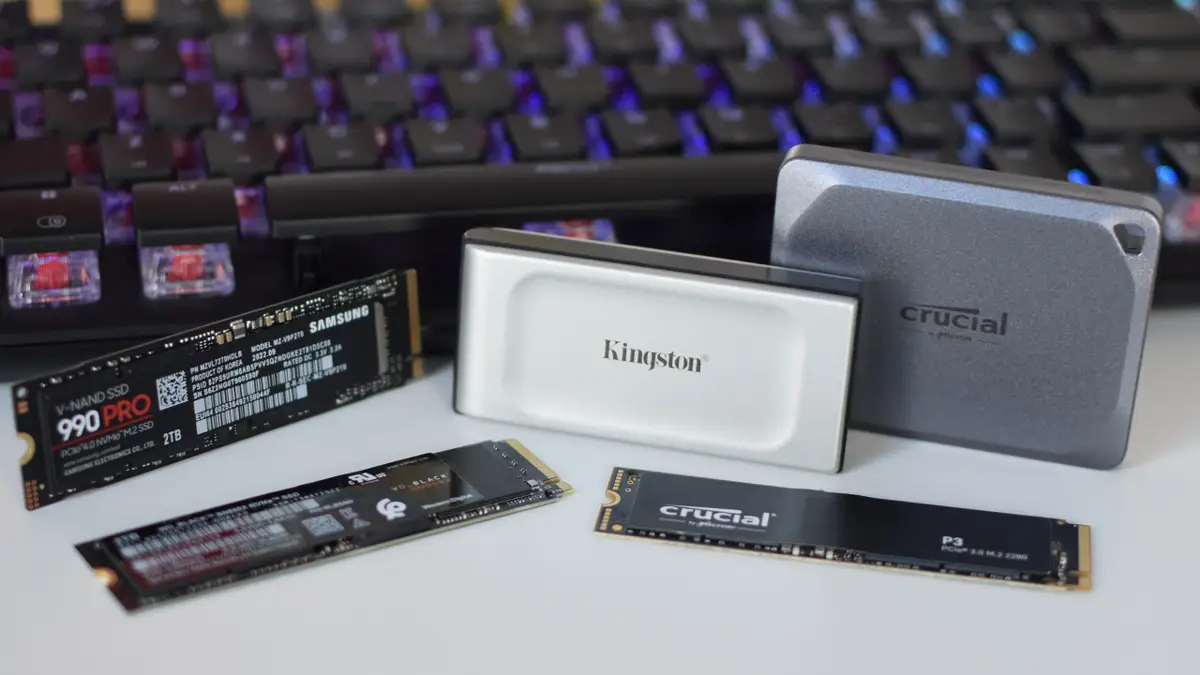Introduction
When it comes to improving the performance and speed of your computer, upgrading to a solid-state drive (SSD) is an excellent choice. SSDs offer faster booting times, quicker file transfers, and enhanced overall system responsiveness compared to traditional mechanical hard drives. However, before making a purchase, it is important to ensure that the SSD you choose is compatible with your computer.
Compatibility is crucial because not all SSDs are created equal. There are various factors to consider, including form factor, interface compatibility, operating system compatibility, and compatibility with BIOS and UEFI. In this article, we will explore these factors in detail, providing you with the necessary information to make an informed decision when selecting an SSD for your computer.
It is worth mentioning that SSDs come in different form factors, such as 2.5-inch, M.2, and mSATA. They also have different interfaces, including SATA and NVMe. The form factor and interface of the SSD need to be compatible with your computer’s hardware in order for it to work seamlessly.
Furthermore, the compatibility of SSDs extends beyond the physical aspects. They need to be compatible with the operating system installed on your computer, whether it’s Windows, macOS, or Linux. Additionally, they must be compatible with your computer’s BIOS (Basic Input/Output System) or UEFI (Unified Extensible Firmware Interface). Your motherboard plays a crucial role in determining the compatibility of the SSD as well.
In the following sections, we will delve into each compatibility aspect in greater detail to ensure that you have a clear understanding of what to look for when choosing an SSD for your computer. Let’s explore the world of SSD compatibility and find the perfect match for your system.
Factors to Consider Before Choosing an SSD
Before diving into the specifics of SSD compatibility, there are a few key factors that you should consider when selecting an SSD for your computer.
Firstly, you should determine your storage needs. SSDs come in a range of capacities, from the relatively small 120GB drives to larger options like 1TB or even 2TB drives. Assess your usage requirements and choose an SSD that offers sufficient storage space for your operating system, applications, and files.
Another important factor to consider is the intended use of the SSD. Are you planning to use it as a primary drive for your operating system or as a secondary storage drive? If it’s for your OS, you should prioritize faster read and write speeds, as these will significantly improve boot times and file access. For secondary storage, focusing on a larger capacity might be more important.
Budget is also a crucial consideration. SSDs tend to be pricier than traditional hard drives, although prices have lowered significantly in recent years. Set a budget and try to find the best SSD that matches your requirements within that range.
Reliability and durability are also vital factors. Look for SSDs that have a high endurance rating, indicated by the Total Bytes Written (TBW) specification. This indicates how much data can be written to the drive before it starts to experience performance degradation.
Lastly, it’s essential to consider the reputation and warranty of the SSD manufacturer. Opt for reputable brands that offer a solid warranty, giving you peace of mind and protection against any potential defects or failures.
By considering these factors, you can narrow down the options and find an SSD that best suits your needs and is compatible with your computer. Now that we have covered the general factors to consider, let’s delve into the specific compatibility aspects you should be aware of when choosing an SSD for your system.
Form Factors of SSDs
SSDs come in different form factors, which refer to their physical size and shape. The form factor of an SSD determines how it is installed and connected to your computer. Understanding the different form factors is crucial for ensuring compatibility with your computer’s hardware.
One common form factor is the 2.5-inch SSD, which resembles a traditional laptop hard drive. These drives are relatively easy to install, as they typically use the same SATA (Serial ATA) interface as mechanical hard drives. 2.5-inch SSDs are compatible with most desktop computers and laptops that have a standard 2.5-inch drive bay or a compatible adapter.
An increasingly popular form factor is the M.2 SSD. M.2 SSDs are much smaller in size, resembling a stick of chewing gum. They connect directly to the motherboard via a dedicated M.2 slot, eliminating the need for cables. M.2 SSDs offer faster speeds than 2.5-inch SATA SSDs and are commonly found in newer laptops and desktop motherboards.
Another form factor to consider is the mSATA SSD, which is even smaller than the M.2 SSD. mSATA SSDs were commonly used in older laptops and desktops that had an mSATA slot, providing a compact storage solution. However, the use of mSATA SSDs has become less common in recent years, with M.2 SSDs becoming the preferred choice due to their faster speeds.
It’s important to note that the form factor of the SSD must match the available slots on your computer’s motherboard. If you are unsure which form factor your computer supports, consult the documentation or specifications of your motherboard or check with the manufacturer.
To summarize, SSDs are available in different form factors, such as 2.5-inch, M.2, and mSATA. Understanding the form factor compatibility is essential to ensure that the SSD can be physically installed and connected to your computer. Now that we’ve explored form factors, let’s further examine the interface compatibility of SSDs in the next section.
Interface Compatibility of SSDs
The interface of an SSD refers to how it connects to your computer and transfers data. It is important to ensure that the interface of the SSD is compatible with your computer’s hardware, as this will determine the speed and performance of the drive.
One common interface used by SSDs is SATA (Serial ATA). SATA SSDs are widely compatible, as SATA interfaces are available on most desktop motherboards and laptops. The SATA interface has evolved over time, with SATA III being the fastest version currently available, offering maximum speeds of 6 gigabits per second.
Another interface to consider is NVMe (Non-Volatile Memory Express). NVMe SSDs are specifically designed to take advantage of the PCIe (Peripheral Component Interconnect Express) bus, providing significantly faster speeds than SATA SSDs. NVMe SSDs are ideal for high-performance systems, such as gaming PCs or workstations, and are typically found in M.2 form factor drives.
It’s important to note that while NVMe SSDs offer faster speeds, not all computers or motherboards support the NVMe interface. To determine compatibility, check the specifications of your computer or motherboard to see if they support NVMe drives.
If your computer only has SATA interfaces and you want to take advantage of NVMe speeds, you may be able to use an adapter or expansion card that supports NVMe drives. These adapters allow you to install an NVMe drive into a PCIe slot on your motherboard, bypassing the limitations of the SATA interface.
When choosing an SSD, it is crucial to verify the interface compatibility with your computer. Determine whether your computer supports SATA or NVMe interfaces, and choose an SSD that matches the appropriate interface.
In summary, the interface compatibility of an SSD is an important consideration. SATA SSDs are widely compatible, while NVMe SSDs offer faster speeds but require specific hardware support. To ensure compatibility, check the specifications of your computer or motherboard and select an SSD with the appropriate interface. Next, we will explore the compatibility of SSDs with mechanical hard drive slots.
SATA SSD Compatibility
SATA (Serial ATA) SSDs are widely compatible and can be installed in most computer systems that have SATA interfaces. Whether you have a desktop or a laptop, chances are that your computer supports SATA and can accommodate SATA SSDs.
Compatibility with SATA SSDs is relatively straightforward. These drives use the same connectors and cables as traditional mechanical hard drives, making the installation process seamless. The SATA interface has evolved over time, with SATA III being the most common version available today, offering maximum speeds of 6 gigabits per second.
If your computer has an available SATA drive bay, you can easily swap out your existing mechanical hard drive with a SATA SSD. Alternatively, if your computer has multiple drive bays, you can install a SATA SSD alongside your existing hard drive or SSD to enjoy the benefits of faster boot times and improved responsiveness.
Another advantage of SATA SSDs is that they are backward compatible. This means that you can use a SATA III SSD on a SATA II interface and vice versa. However, bear in mind that the speed of the SSD will be limited by the speed of the interface it’s connected to. For example, if you connect a SATA III SSD to a SATA II interface, you will experience reduced performance compared to the drive’s full potential.
It is worth noting that while SATA SSDs are compatible with most computers, they do have limitations in terms of speed. If you require faster speeds and your computer supports it, considering an SSD with an NVMe interface might be a better option.
In summary, SATA SSDs are highly compatible with most desktop and laptop computers. They use the same connectors and cables as traditional hard drives and can be installed in existing drive bays. However, keep in mind that the speed of the SSD is influenced by the speed of the SATA interface it’s connected to, and SATA SSDs have inherent limitations in terms of speed compared to NVMe SSDs. Next, we will explore the compatibility of SSDs with mechanical hard drive slots.
NVMe SSD Compatibility
NVMe (Non-Volatile Memory Express) SSDs offer lightning-fast speeds and are designed to take advantage of the PCIe (Peripheral Component Interconnect Express) bus, providing significantly faster performance than SATA SSDs. However, it is important to ensure that your computer’s hardware is compatible with NVMe SSDs before making a purchase.
NVMe SSDs are commonly found in the M.2 form factor, and they require an M.2 slot on your computer’s motherboard to be installed. Therefore, it is crucial to check whether your computer or motherboard has an available M.2 slot before considering an NVMe SSD.
In addition to the physical slot requirement, your computer’s motherboard must also support the NVMe protocol. This means that it needs to have the appropriate BIOS or UEFI firmware that recognizes NVMe drives. Without the necessary motherboard support, your computer may not detect or boot from the NVMe SSD.
Most modern motherboards, especially those designed for gaming or high-performance systems, support NVMe SSDs. However, it is always advisable to consult your motherboard’s documentation or visit the manufacturer’s website to verify NVMe compatibility.
If your computer or motherboard does not support NVMe SSDs directly, there are still options available. You can use an adapter or expansion card that converts a PCIe slot into an M.2 slot, allowing you to install an NVMe SSD. These adapters enable you to take advantage of NVMe speeds even if your motherboard does not support NVMe natively.
It’s important to note that NVMe SSDs offer exceptional performance, and if your computer supports them, they will provide significantly faster speeds and improved overall system responsiveness compared to SATA SSDs. However, if your computer does not have the necessary hardware compatibility, it is not possible to use an NVMe SSD.
Before purchasing an NVMe SSD, make sure to check the compatibility of your computer’s hardware, specifically the availability of an M.2 slot and motherboard support for NVMe drives. These considerations will ensure a seamless installation and the ultimate performance benefits of an NVMe SSD.
In summary, NVMe SSDs offer blazing-fast speeds but require specific hardware compatibility. Verify that your computer has an M.2 slot and supports NVMe SSDs before making a purchase. If your computer does not support NVMe natively, consider using an adapter or expansion card to gain NVMe compatibility. Next, we will explore the compatibility of SSDs with mechanical hard drive slots.
SSD Compatibility with Mechanical Hard Drive Slots
If you have a computer that currently has traditional mechanical hard drives installed, you may be wondering if SSDs are compatible with your existing drive slots. The good news is that most SSDs are designed to fit into the same slots as their mechanical counterparts, making the upgrade process relatively easy.
SSDs are available in the 2.5-inch form factor, which is the same size as most laptop and desktop hard drives. This means that you can replace your mechanical hard drive with a 2.5-inch SSD without any physical modifications or additional adapters. Simply remove the old hard drive and install the SSD in its place using the same SATA power and data cables.
It’s worth noting that some desktop computer cases have additional mounting points or brackets specifically designed for SSDs. These mounting options can help secure the SSD in place and prevent any movement or vibrations that could affect performance. However, if your case does not have dedicated SSD mounting options, you can still secure the SSD using the existing mounting points typically used for mechanical hard drives.
When it comes to compatibility, SSDs are usually more flexible than mechanical hard drives. They are not affected by factors such as orientation or vibration, and they can operate in any position. This makes it easier to fit the SSD securely in your computer, regardless of its design or layout.
If you are considering adding an SSD alongside your existing mechanical hard drive, most desktop computers have multiple drive bays available. This allows you to keep your mechanical hard drive for additional storage and install an SSD for enhanced speed and performance. Consult your computer’s documentation or the manufacturer’s website to identify the available drive bays and their compatibility.
In summary, SSDs are compatible with the same drive slots used by traditional mechanical hard drives. The 2.5-inch form factor of most SSDs ensures easy installation and fitting into existing drive bays. Remember to use the same SATA power and data cables to connect the SSD to your computer. If you have multiple drive bays, you can install an SSD alongside your existing mechanical hard drive to take advantage of the improved speed and performance. Now let’s explore the compatibility of SSDs with different operating systems.
Compatibility with Operating Systems
One crucial aspect to consider when choosing an SSD is its compatibility with your computer’s operating system. Different operating systems may have specific requirements or limitations when it comes to SSDs, so it’s important to ensure that the SSD you choose is compatible with your preferred operating system.
Most modern SSDs are compatible with a wide range of operating systems, including Windows, macOS, and Linux. These operating systems have built-in support for SSDs and can easily detect and use them as storage devices.
When installing an SSD, the operating system will typically recognize it as a new storage device and allow you to format and partition it for use. This process may vary slightly depending on the operating system, but it is generally straightforward and can be done through the Disk Management tool in Windows, Disk Utility on macOS, or command-line utilities on Linux.
In addition to basic compatibility, some operating systems offer specific features or optimizations for SSDs. For example, Windows 10 includes features like TRIM and the ability to enable or disable defragmentation for solid-state drives. These features help improve the performance and lifespan of the SSD.
MacOS also has built-in support for TRIM and includes features like Power Nap, which allows the SSD to perform maintenance tasks even while the computer is asleep, further enhancing the overall performance and lifespan of the SSD.
Linux distributions, on the other hand, offer various options and configurations for optimizing SSD performance. This includes features like discard/TRIM support, journaling options, and I/O scheduler settings.
It is important to note that while SSDs are generally compatible with most operating systems, older or less widely used operating systems may have limited or no native support for SSDs. In such cases, you may need to install additional drivers or software to ensure the SSD is recognized and used correctly.
Before purchasing an SSD, it is advisable to check the documentation or support resources for your preferred operating system to ensure that the SSD is fully compatible. This will help ensure that you can take full advantage of the features and optimizations available for SSDs on your chosen operating system.
In summary, most modern SSDs are compatible with popular operating systems such as Windows, macOS, and Linux. These operating systems have built-in support for SSDs and offer various features and optimizations to enhance performance. However, older or less commonly used operating systems may require additional drivers or software for full SSD compatibility. Now let’s move on to discuss compatibility with BIOS and UEFI.
Compatibility with BIOS and UEFI
When considering the compatibility of an SSD with your computer, it’s important to take into account the compatibility with the computer’s firmware, specifically the BIOS (Basic Input/Output System) or UEFI (Unified Extensible Firmware Interface).
Many older computers use BIOS firmware, while newer systems utilize UEFI. Both BIOS and UEFI serve as the interface between the computer’s hardware and the operating system, and they play a crucial role in determining whether an SSD can be recognized and utilized by the system.
SATA SSDs generally have excellent compatibility with both BIOS and UEFI firmware. In most cases, the BIOS or UEFI can easily detect and recognize the SATA SSD as a bootable device or as additional storage.
However, NVMe SSDs may require additional considerations. Some older computers with only BIOS firmware may not have native support for NVMe drives, as these drives require UEFI firmware to be recognized. If you have an older system with only BIOS, it may not be compatible with NVMe SSDs.
If you have a system with UEFI firmware, compatibility with NVMe SSDs is typically not an issue. UEFI firmware offers native support for NVMe drives, allowing your computer to detect and utilize them without any extra configuration.
It’s important to note that even if your computer supports UEFI firmware and NVMe drives, you may need to enable specific settings in the UEFI configuration to ensure proper recognition and bootability of the NVMe SSD. Consult your motherboard or computer manufacturer’s documentation for specific instructions on enabling NVMe support in UEFI.
It is always a good idea to update your computer’s firmware to the latest version provided by the manufacturer. Firmware updates often include bug fixes, performance improvements, and in some cases, added compatibility for new hardware components such as SSDs.
Before purchasing an SSD, it is essential to verify the compatibility with your computer’s firmware. Check whether your system uses BIOS or UEFI, and ensure that the SSD you choose is compatible with the corresponding firmware. This will help ensure that the SSD is recognized and utilized properly by your computer.
In summary, SSD compatibility with the computer’s firmware, whether it is BIOS or UEFI, is an important consideration. SATA SSDs generally have good compatibility with both BIOS and UEFI, while NVMe SSDs may require UEFI firmware for proper recognition. Updating your computer’s firmware and enabling specific settings may be necessary for proper recognition and bootability of NVMe SSDs. Now let’s move on to discuss compatibility with motherboards.
SSD Compatibility with Motherboards
One of the key factors to consider when choosing an SSD is its compatibility with the motherboard of your computer. The motherboard serves as the foundation of your computer, connecting all the components together, including the SSD.
Compatibility with motherboards involves both the physical form factor of the SSD and the interface it uses to connect to the motherboard. It’s important to ensure that the SSD matches the available slots and connectors on your motherboard.
The most common form factors of SSDs are 2.5-inch, M.2, and mSATA. The motherboard must have corresponding slots or connectors that support these form factors. For example, if you have an M.2 SSD, your motherboard must have an M.2 slot available for installation.
Additionally, it’s crucial to consider the interface compatibility between the SSD and the motherboard. SATA SSDs connect via the SATA interface, while NVMe SSDs connect via the PCIe (Peripheral Component Interconnect Express) interface.
Most modern motherboards have multiple SATA connectors, allowing you to connect multiple SATA SSDs. However, if you plan to use NVMe SSDs, ensure that your motherboard supports the NVMe protocol and has an available M.2 slot or PCIe slot for installation.
It’s important to consult the specifications of your motherboard or check with the manufacturer to ensure that the SSD you choose is compatible with your specific motherboard model. This will provide you with the confidence that the SSD will fit properly and be recognized by the motherboard.
In addition to physical compatibility, it’s critical to consider the compatibility of the motherboard’s firmware with the SSD. This includes checking for any specific requirements or limitations related to the SSD brand or model. Firmware updates for the motherboard may also be necessary to ensure optimal compatibility and performance.
Overall, SSD compatibility with motherboards involves ensuring the physical form factor fits the available slots and connectors, as well as verifying the interface compatibility and firmware support. By doing so, you can be confident that the SSD will integrate seamlessly with your motherboard for reliable performance and improved system responsiveness.
In summary, SSD compatibility with motherboards is determined by the physical form factor, interface compatibility, and firmware support. Verify that the SSD matches the available slots and connectors on your motherboard, and ensure that the interface and firmware requirements are met. Now let’s move on to discuss the compatibility of SSDs with laptops and desktops.
Compatibility with Laptops and Desktops
When considering the compatibility of an SSD, it’s important to take into account whether it is suitable for your specific type of computer, whether it’s a laptop or a desktop.
Laptops generally have limited space for storage devices, with most models featuring a single drive bay. Therefore, it’s crucial to ensure that the SSD you choose is compatible with your laptop’s form factor and interface.
Most laptops use the 2.5-inch form factor for storage drives, and as such, a 2.5-inch SATA SSD is typically the compatible choice. It can be easily installed in the existing hard drive bay, replacing the mechanical hard drive. However, some modern laptops, especially ultrabooks, may utilize the smaller M.2 form factor for their storage devices.
If your laptop has an M.2 slot, you will need to check the specific keying and length supported by the slot. M.2 SSDs come in different key types (e.g., B and M) and lengths (e.g., 2280 and 2260). Verify the supported key and length specifications of your laptop’s M.2 slot before purchasing an M.2 SSD.
Another consideration for laptop compatibility is the interface of the SSD. Most laptops support SATA SSDs, as they use the same connectors and cables as mechanical hard drives. However, some newer laptops may also support faster NVMe SSDs, utilizing their built-in M.2 slots and support for newer technologies.
When it comes to desktop computers, the compatibility options are wider. Desktops typically have more space for storage devices, allowing for greater flexibility in choosing SSD form factors. The most common form factor for desktops is the 2.5-inch SSD, which can be easily installed in the existing hard drive bays.
Additionally, desktop motherboards often provide more SATA connectors, allowing for multiple SATA SSDs to be connected. This means you can install more than one SSD for additional storage or as a separate boot drive.
For desktops with M.2 slots, both SATA and NVMe SSDs can be used. These high-speed interfaces provide faster data transfer rates, enhancing overall system performance.
In summary, when selecting an SSD for your computer, whether it’s a laptop or a desktop, consider the form factor and interface compatibility. Laptops typically accommodate 2.5-inch SATA SSDs or smaller M.2 SSDs, while desktops offer more flexibility with a range of form factors and interface options. Be aware of the specific form factor and interface requirements of your computer to ensure a seamless installation and optimal performance.
Conclusion
Choosing a compatible SSD for your computer is essential to ensure optimal performance and compatibility. With various aspects to consider, such as form factor, interface compatibility, operating system support, firmware compatibility, and motherboard compatibility, it’s crucial to have a clear understanding of what to look for when selecting an SSD.
Before making a purchase, assess your storage needs, consider your budget, and determine the intended use of the SSD. Familiarize yourself with the different form factors, such as 2.5-inch, M.2, and mSATA, and verify that your computer has the necessary slots for installation. Understand the interface compatibility, with SATA and NVMe being the most common options, and ensure that your computer’s hardware supports the chosen interface.
Check the compatibility with your operating system to ensure smooth integration and access to specific features or optimizations. Verify the compatibility with your computer’s BIOS or UEFI firmware, especially for NVMe SSDs. Ensure that your chosen SSD is compatible with your motherboard, including physical form factor and interface support.
By considering these factors and understanding the compatibility requirements, you can select the right SSD that seamlessly integrates with your computer, providing faster boot times, quicker file transfers, and enhanced overall system responsiveness.
Remember to consult the documentation or support resources of your computer, motherboard, and operating system to ensure accurate information about compatibility. Stay informed about any firmware updates or settings adjustments that may be required.
With a compatible SSD, you can unlock the full potential of your computer, enjoy improved performance, and optimize your computing experience.







